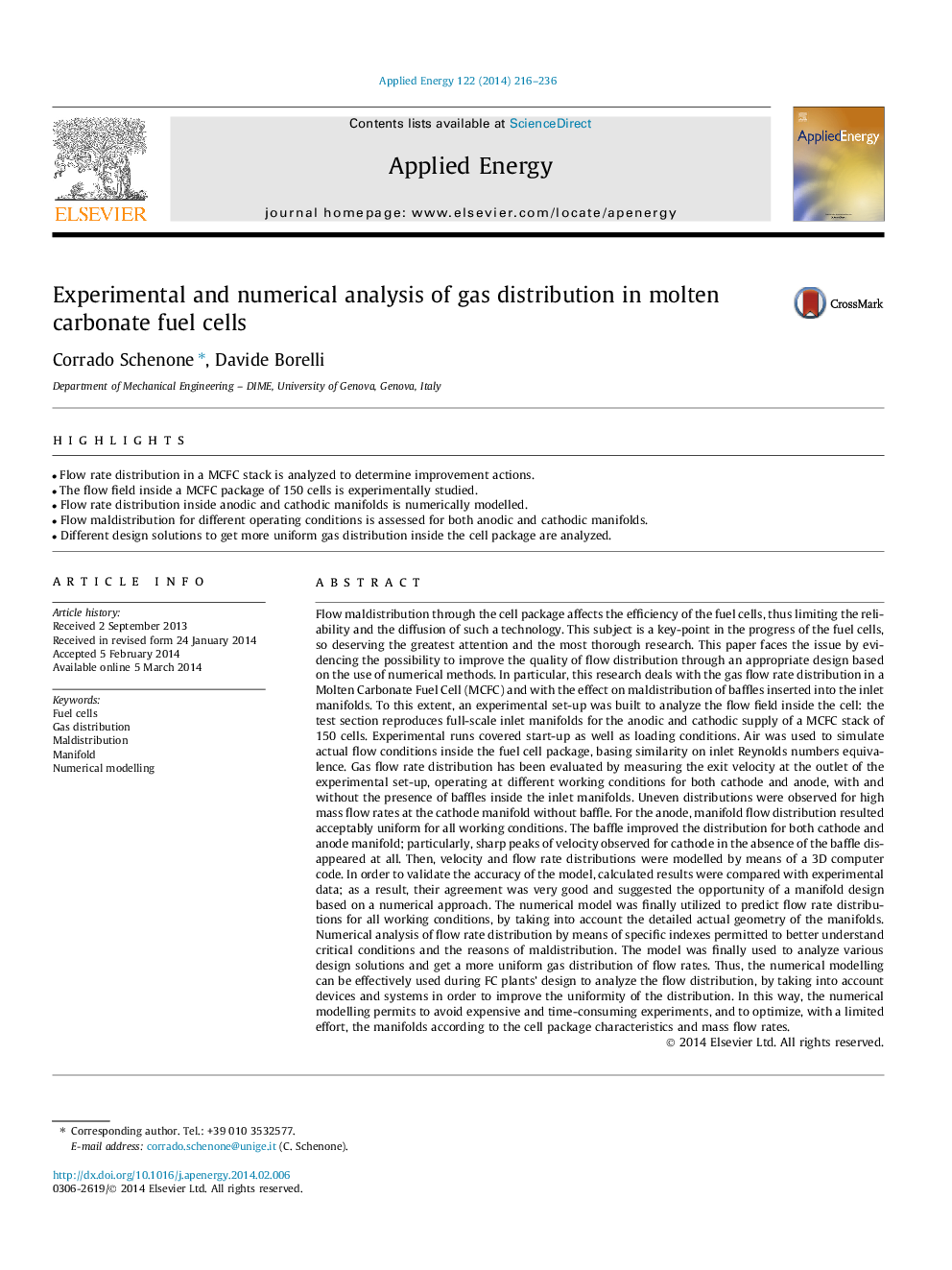| کد مقاله | کد نشریه | سال انتشار | مقاله انگلیسی | نسخه تمام متن |
|---|---|---|---|---|
| 6690608 | 501901 | 2014 | 21 صفحه PDF | دانلود رایگان |
عنوان انگلیسی مقاله ISI
Experimental and numerical analysis of gas distribution in molten carbonate fuel cells
ترجمه فارسی عنوان
تجزیه و تحلیل تجربی و عددی توزیع گاز در سلول های سوخت کربنات مولد
دانلود مقاله + سفارش ترجمه
دانلود مقاله ISI انگلیسی
رایگان برای ایرانیان
کلمات کلیدی
سلول های سوختی، توزیع گاز، توهین آمیز، مانیفولد، مدل سازی عددی،
موضوعات مرتبط
مهندسی و علوم پایه
مهندسی انرژی
مهندسی انرژی و فناوری های برق
چکیده انگلیسی
Flow maldistribution through the cell package affects the efficiency of the fuel cells, thus limiting the reliability and the diffusion of such a technology. This subject is a key-point in the progress of the fuel cells, so deserving the greatest attention and the most thorough research. This paper faces the issue by evidencing the possibility to improve the quality of flow distribution through an appropriate design based on the use of numerical methods. In particular, this research deals with the gas flow rate distribution in a Molten Carbonate Fuel Cell (MCFC) and with the effect on maldistribution of baffles inserted into the inlet manifolds. To this extent, an experimental set-up was built to analyze the flow field inside the cell: the test section reproduces full-scale inlet manifolds for the anodic and cathodic supply of a MCFC stack of 150 cells. Experimental runs covered start-up as well as loading conditions. Air was used to simulate actual flow conditions inside the fuel cell package, basing similarity on inlet Reynolds numbers equivalence. Gas flow rate distribution has been evaluated by measuring the exit velocity at the outlet of the experimental set-up, operating at different working conditions for both cathode and anode, with and without the presence of baffles inside the inlet manifolds. Uneven distributions were observed for high mass flow rates at the cathode manifold without baffle. For the anode, manifold flow distribution resulted acceptably uniform for all working conditions. The baffle improved the distribution for both cathode and anode manifold; particularly, sharp peaks of velocity observed for cathode in the absence of the baffle disappeared at all. Then, velocity and flow rate distributions were modelled by means of a 3D computer code. In order to validate the accuracy of the model, calculated results were compared with experimental data; as a result, their agreement was very good and suggested the opportunity of a manifold design based on a numerical approach. The numerical model was finally utilized to predict flow rate distributions for all working conditions, by taking into account the detailed actual geometry of the manifolds. Numerical analysis of flow rate distribution by means of specific indexes permitted to better understand critical conditions and the reasons of maldistribution. The model was finally used to analyze various design solutions and get a more uniform gas distribution of flow rates. Thus, the numerical modelling can be effectively used during FC plants' design to analyze the flow distribution, by taking into account devices and systems in order to improve the uniformity of the distribution. In this way, the numerical modelling permits to avoid expensive and time-consuming experiments, and to optimize, with a limited effort, the manifolds according to the cell package characteristics and mass flow rates.
ناشر
Database: Elsevier - ScienceDirect (ساینس دایرکت)
Journal: Applied Energy - Volume 122, 1 June 2014, Pages 216-236
Journal: Applied Energy - Volume 122, 1 June 2014, Pages 216-236
نویسندگان
Corrado Schenone, Davide Borelli,
